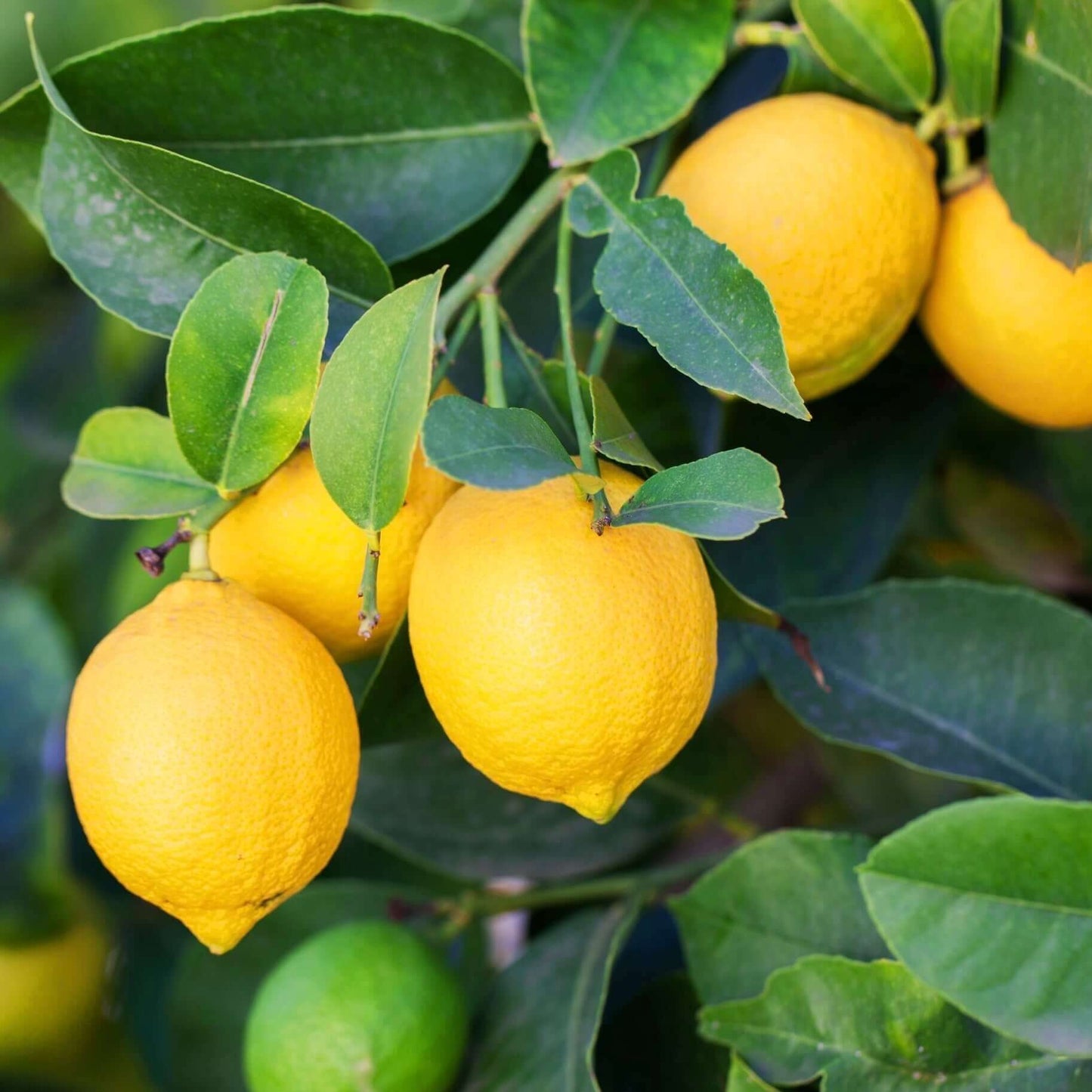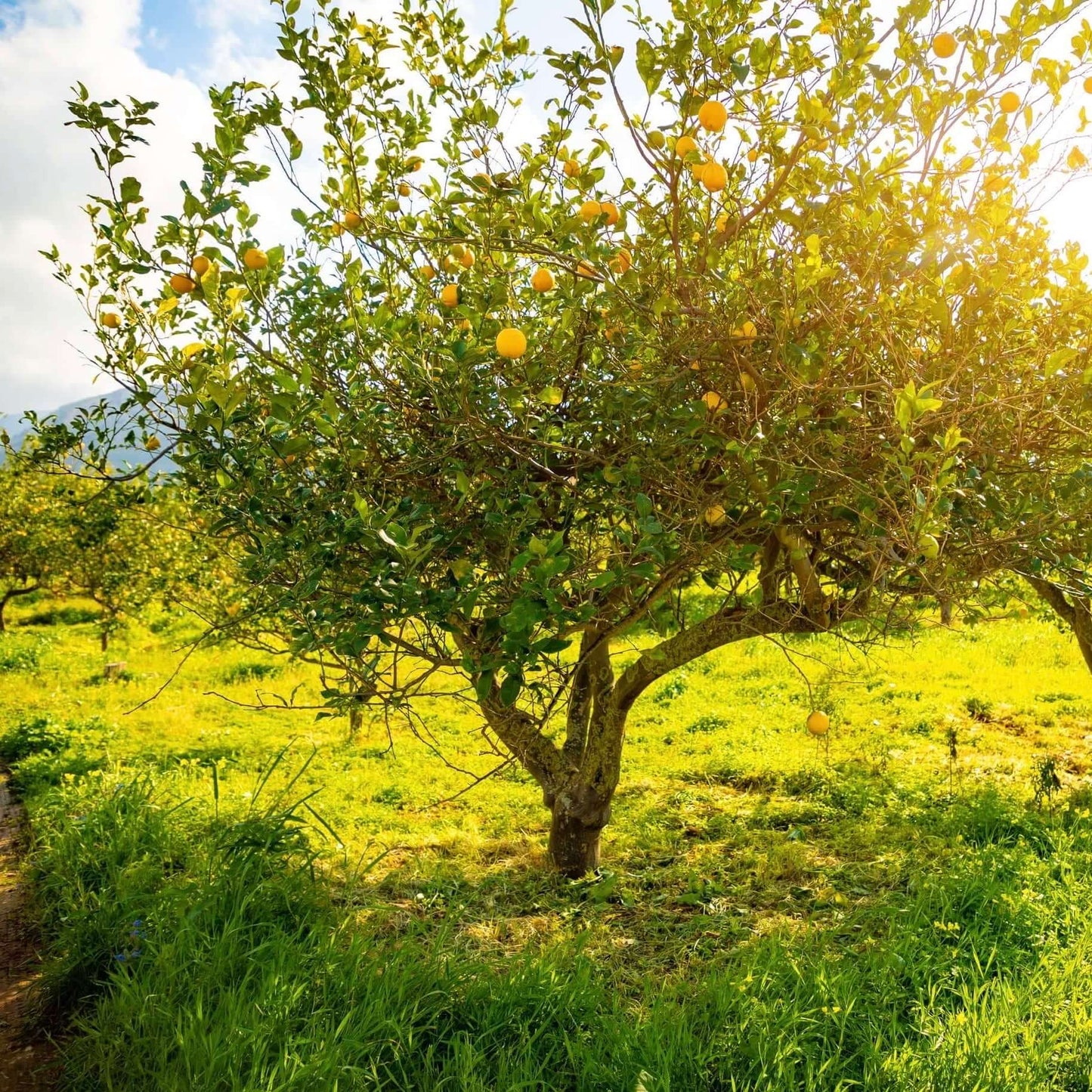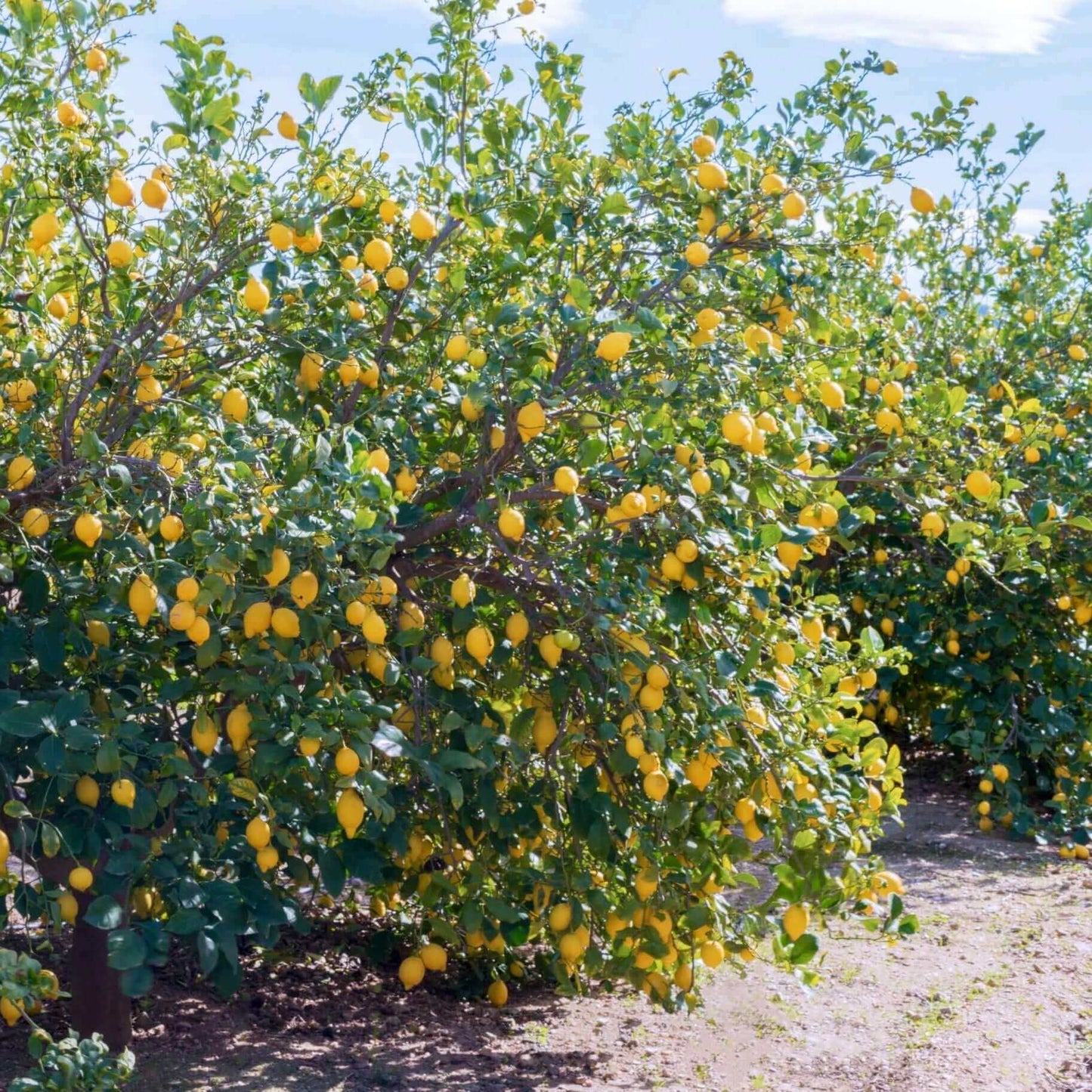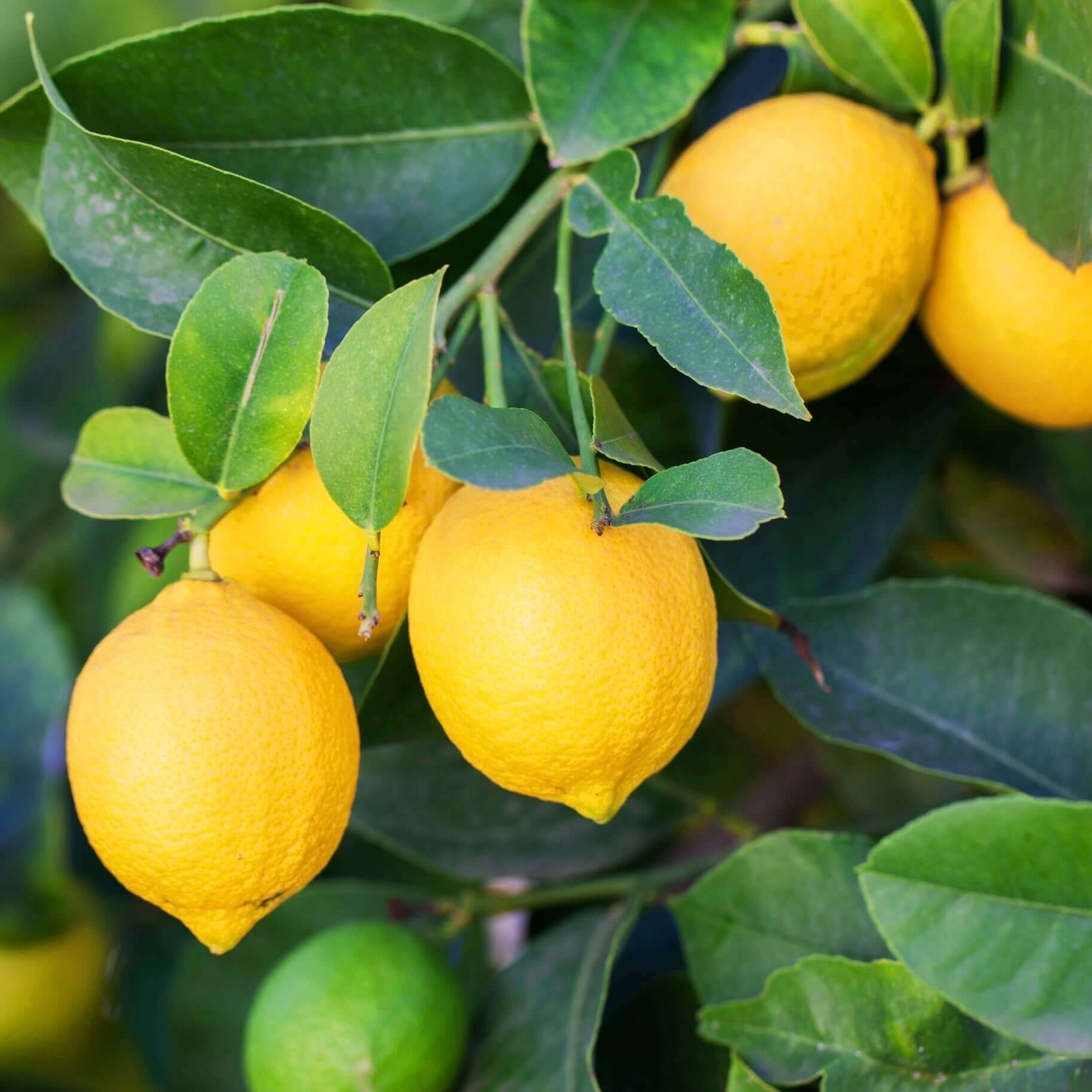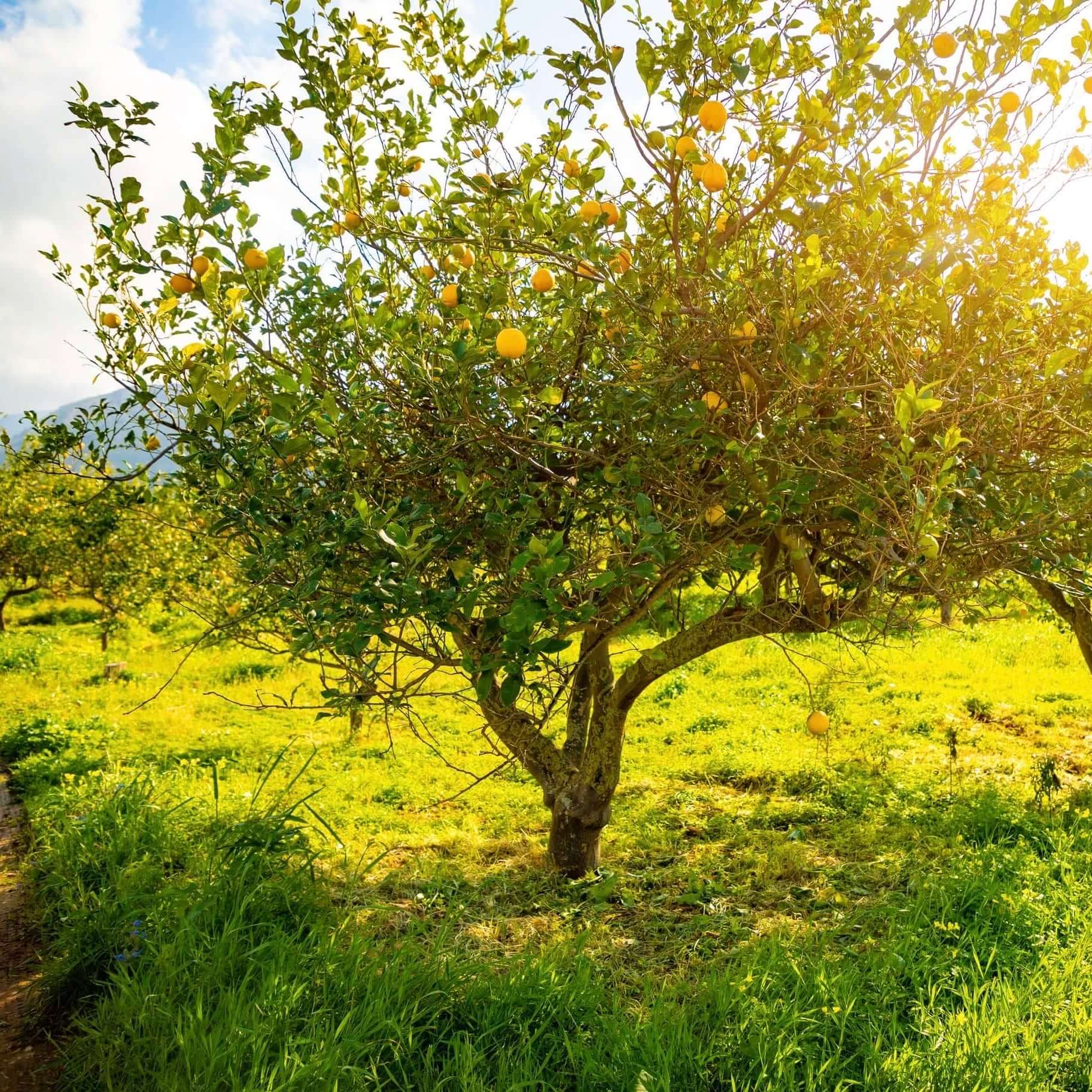


Orders over $399 are delivered for free! All others have a flat rate delivery fee of $40.
Eureka Lemon Tree
Eureka Lemon Tree
Citrus limon 'Eureka'
24-hour money-back guarantee
Free delivery on orders over $399
In Stock
Couldn't load pickup availability
The Eureka Lemon Tree is one of California's principal lemon varieties. Popular in California gardens for its large, juicy, acidic lemons that are ideal for cooking, juicing, and preserving. This is the best lemon for zesting with its thick peel that is full of flavor. This leading commercial lemon variety is a must have for your own garden if you want a true lemon with tart juice and flavorful skin that is ideal for culinary concoctions.
Truly, Eureka lemons have zesty appeal. Their thick skin contains loads of natural oils that are full of flavor, but not as tart as its juice, making it the preferred choice for lemon zest.
In California's mild climate, an Eureka Lemon tree is an excellent choice as an evergreen landscape tree with glossy, green leaves and the bonus of flavorful fruit and star-shaped, white flowers with a fragrance that can stir the senses. The Eureka Lemon plant is taller and more vigorous than the Meyer Lemon Tree, but its size is easy to maintain with minimal effort. The Eureka Lemon tree looks great in containers too and is the perfect gift that keeps giving.
Add a Eureka Lemon Tree to your patio or garden and enjoy everything this amazing citrus tree has to offer.
Semi-Dwarf vs. Standard citrus trees:
The difference between a semi-dwarf tree and a standard tree is the mature height. Semi-dwarf citrus trees are smaller and grow to approximately two-thirds the size of a standard tree form. Depending on the position of the lower branches on the trunk, a semi-dwarf citrus can look like a bush with a short trunk, or a tree with a trunk.
The mature height of a Eureka Lemon tree based on average growing conditions are:
Semi-Dwarf tree: 10-15 ft. tall.
Standard tree: 15-20 ft. tall.
The mature height and fruit production of your citrus tree will depend on several environmental factors such as climate, light, soil type, texture, fertility and moisture, and pruning practices. Your citrus tree can easily be maintained at a smaller size with annual pruning.
Planting a Eureka lemon tree (Citrus limon 'Eureka') can be a fantastic addition to your garden, as it produces abundant, juicy lemons year-round. Here’s a step-by-step guide to help you successfully plant and care for your Eureka lemon tree:
Choosing the Right Location
- Sunlight: Eureka lemon trees thrive in full sun, so select a spot that receives at least 6 to 8 hours of direct sunlight each day.
- Space: Ensure there’s enough space for the tree to grow. Aim for about 10 to 15 feet of clearance around it to allow for its mature size.
Soil Preparation
- Soil Type: They prefer well-draining soil. A sandy loam or potting mix designed for citrus trees works well.
- pH Level: Aim for a soil pH between 6.0 and 7.5 for optimal growth.
Planting the Tree
- Timing: The best time to plant is in spring or fall when temperatures are milder.
- Digging the Hole: Dig a hole that is about twice the width of the root ball and the same depth. This will provide enough room for the roots to spread.
Planting Steps
- Remove the Tree from the Pot: Carefully take the Eureka lemon tree out of its container, ensuring you don’t damage the roots.
- Loosen Roots: If the roots are circling the root ball, gently loosen them to encourage outward growth.
- Place the Tree: Position the tree in the center of the hole, making sure the top of the root ball is level with the surrounding soil.
- Backfill the Hole: Fill in the hole with soil, gently packing it down to eliminate air pockets. Water the soil as you backfill to help settle it.
Watering
- Initial Watering: Water the tree deeply after planting to help it establish.
- Ongoing Watering: Keep the soil consistently moist but not soggy. Water regularly during the first year, especially in dry periods. As the tree matures, it becomes more drought-tolerant.
Eureka lemon trees are relatively easy to care for, especially when planted in the right conditions. Here are some essential care tips for growing healthy Eureka lemon trees:
Light
- Full Sun: Eureka lemon trees need full sun to produce the best fruit. They require at least 6-8 hours of direct sunlight daily. Plant them in a sunny spot where they will get plenty of light throughout the day.
Watering
- Regular Watering, Especially When Young: Keep the soil consistently moist but not soggy during the first 1-2 years after planting. Water deeply once or twice a week, allowing the top few inches of soil to dry out between waterings.
- Deep, Infrequent Watering After Establishment: Once the tree is established, it becomes more drought-tolerant. Water deeply every 1-2 weeks, depending on the weather and soil type. In hot, dry climates, you may need to water more often.
- Avoid Overwatering: Ensure the soil has good drainage, as lemon trees do not like to sit in waterlogged soil, which can lead to root rot.
Soil
- Well-Drained, Slightly Acidic Soil: Eureka lemon trees prefer well-drained, sandy loam soil that is slightly acidic (pH 5.5-6.5). If your soil is heavy clay, consider amending it with organic matter to improve drainage.
- Container Growing: If planting in a container, use a high-quality, well-draining potting mix designed for citrus or other fruit trees. Make sure the pot has drainage holes.
Fertilization
- Citrus-Specific Fertilizer: Feed Eureka lemon trees with a citrus-specific fertilizer that provides a balanced mix of nitrogen, phosphorus, and potassium, as well as essential micronutrients like iron, magnesium, and zinc. Follow the package instructions for the proper dosage.
- Fertilizing Schedule: Apply fertilizer 3-4 times a year: in early spring, late spring, mid-summer, and early fall. Avoid fertilizing during winter, when the tree’s growth slows down.
Pruning
- Light Pruning to Maintain Shape: Prune the tree lightly in late winter or early spring before new growth begins. Focus on removing dead, damaged, or crossing branches, as well as any suckers growing from the base of the trunk.
- Avoid Heavy Pruning: While regular pruning can help shape the tree and improve air circulation, avoid cutting back too much at once, as it can stress the tree and reduce fruit production.
- Thin the Canopy for Better Airflow: A well-pruned canopy allows more sunlight to reach the inner branches, reducing the risk of fungal diseases and encouraging better fruit development.
Mulching
- Apply Mulch to Conserve Moisture: Use a 2-3 inch layer of mulch (such as wood chips, straw, or compost) around the base of the tree to retain soil moisture, suppress weeds, and regulate soil temperature. Keep mulch at least 6 inches away from the trunk to prevent rot. Upon planting keep a distance of 6-12" away from the trunk.
Harvesting
- Year-Round Fruit Production: Eureka lemon trees are known for producing fruit almost year-round, with the heaviest crop appearing in late winter to early spring.
- Wait for Fully Ripe Lemons: Lemons are ready to harvest when they are bright yellow, firm, and slightly soft to the touch. Twist or cut them off the tree gently to avoid damaging the branches.
Pest and Disease Management
- Monitoring: Regularly check for pests such as aphids, spider mites, and scale. If detected, treat them promptly with insecticidal soap or neem oil.
- Diseases: Ensure proper watering and drainage to prevent root rot and other diseases.
Eureka lemon trees are relatively easy to grow and can provide a steady supply of delicious, tangy lemons with the right care. Whether planted in the ground or in containers, they make a beautiful and productive addition to any garden, patio, or balcony.
How we Deliver Plants
By using our own fleet of vans and trucks, we're able to control quality and deliver right to your door.

